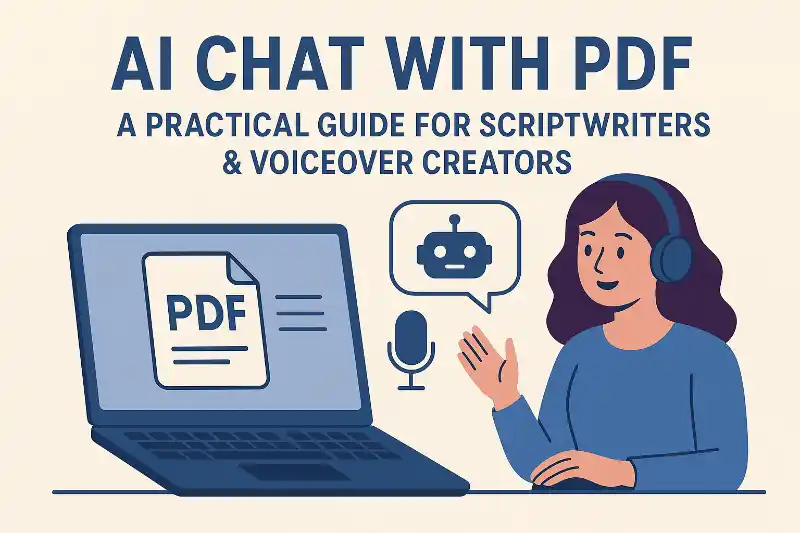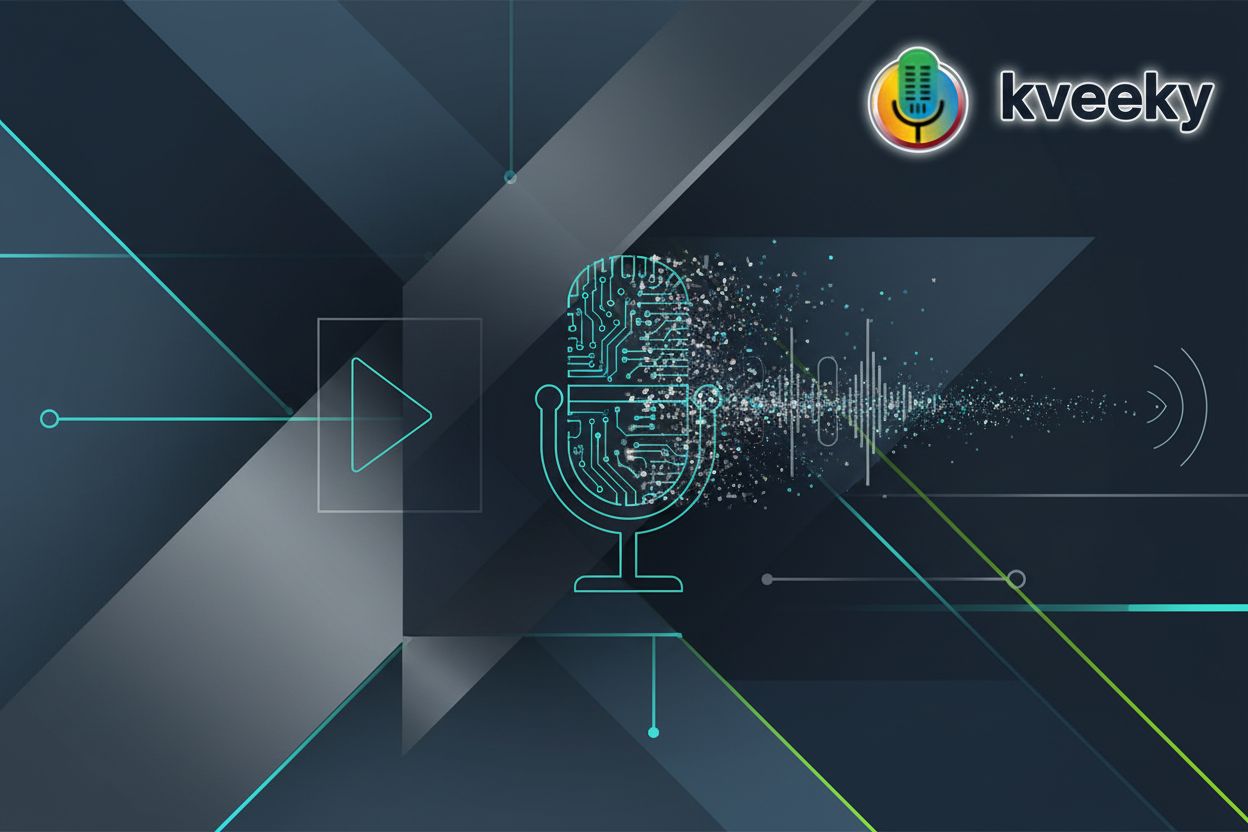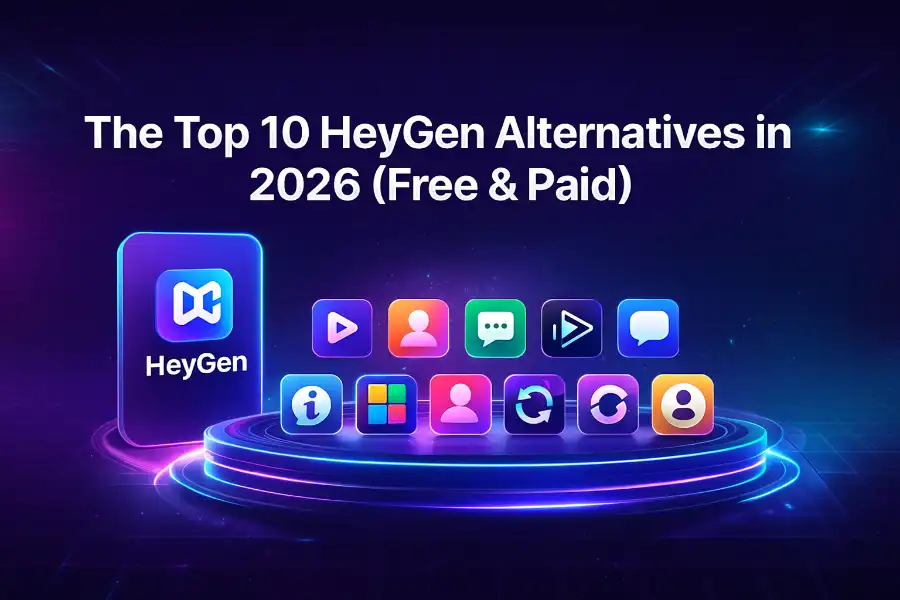Level Up: Voice Skill Development for AI Virtual Assistants in Audio Production
TL;DR
The Rise of AI Virtual Assistants in Audio Production
Ai virtual assistants are reshaping audio production, making it easier than ever to create professional-quality content. But how are these ai assistants changing the game?
Ai virtual assistants are automating many time-consuming audio tasks.
- Voiceover Generation: Ai can generate realistic voiceovers from scripts, saving time and money compared to hiring voice actors.
- Audio Editing: Ai tools can automatically edit audio, remove background noise, and adjust levels, streamlining the post-production process.
- Workflow Streamlining: Ai virtual assistants can automate routine tasks within audio production, like organizing project files or scheduling recording sessions, freeing up time for more creative endeavors.
By reducing manual work, ai virtual assistants enhance productivity. This allows audio professionals to focus on the artistic aspects of their projects.
Ai virtual assistants are also breaking down language barriers.
- Multilingual Content: Ai can translate and generate audio content in multiple languages, reaching a global audience.
- Diverse Audiences: This capability helps cater to diverse audiences, ensuring content is accessible to more people.
- Accessibility Improvements: Ai can also improve content accessibility for individuals with disabilities, such as generating audio descriptions for visual content.
Ai ensures a consistent voice and tone across all audio materials.
- Uniform Voice Quality: Ai virtual assistants offer uniform voice quality, eliminating variations in delivery.
- Brand Consistency: Maintaining brand consistency is easier with ai, ensuring all audio materials align with your brand's voice.
- Reduced Errors: By automating tasks, ai reduces errors and inconsistencies in voice delivery.
As ai technology advances, we can expect even more sophisticated tools for audio production. These tools will continue to improve efficiency, accessibility, and quality.
Next, we'll explore the essential voice skills needed to harness the power of ai virtual assistants in audio production.
Key Voice Skills for AI Virtual Assistants
Ai virtual assistants are rapidly evolving, bringing new capabilities to audio production. Understanding the key voice skills these assistants possess is crucial for leveraging their full potential.
Natural Language Processing (NLP) is a cornerstone skill, allowing ai to decipher and react to human language. NLP enables ai to grasp the intent behind voice commands, leading to more precise audio edits and voiceover generation. For example, understanding the intent to 'reduce background noise' allows the ai to apply specific filtering algorithms.
- It enhances the accuracy of voice commands, ensuring the ai correctly interprets instructions for tasks like audio mixing and mastering.
- Nlp improves script interpretation, allowing ai to generate voiceovers that match the intended tone and style.
- Nlp makes conversations with ai more natural, leading to more intuitive workflows in audio production.
Imagine a video producer using voice commands to adjust audio levels, add sound effects, or sync dialogue. Nlp ensures the ai understands the nuances of these requests, delivering accurate and efficient results.
The ability to generate voiceovers in multiple languages is a key skill, opening up new opportunities for audio professionals. Ai virtual assistants with multilingual capabilities expand the reach of audio content to global audiences.
- They enable the creation of localized audio content, ensuring that voiceovers resonate with different cultural contexts.
- Multilingual support caters to the diverse language preferences of audiences, broadening the appeal of audio productions.
Ai's ability to customize and clone voices provides unique branding and consistency opportunities. Voice customization allows video producers to create unique audio experiences for their audiences.
- Voice cloning ensures a consistent voice across all audio projects, maintaining brand identity and recognition.
- Customization personalizes audio, allowing for tailored experiences based on audience demographics or project requirements.
In the evolving landscape of ai, the core voice skills of virtual assistants are essential for video producers to stay ahead. As ai continues to advance, refining skills such as audio editing and enhancing voice quality will further revolutionize audio production.
Training AI Virtual Assistants for Optimal Performance
Ai virtual assistants aren't born experts; they require careful training to deliver optimal performance. Let's explore how you can train ai virtual assistants to meet the specific demands of audio production.
The first step in training an ai virtual assistant is gathering a high-quality dataset. This dataset should include diverse audio samples that represent the range of voices, accents, and tones the ai will encounter.
- You need to collect voice recordings in various environments to account for background noise and acoustic variations.
- Clean and preprocess the audio data to remove any artifacts, such as clipping, silence, or extraneous sounds.
- Organize the data into labeled categories, making it easier for the ai to learn and differentiate between various voice characteristics.
Once you have prepared the data, you can use various machine learning algorithms to train the voice models. Fine-tuning is essential for achieving optimal performance.
- Use algorithms such as deep neural networks or recurrent neural networks (RNNs) to capture the complexities of human speech. These networks are effective because they can process sequential data like speech, recognizing patterns and dependencies over time, which is crucial for understanding pronunciation and intonation.
- Leverage techniques like transfer learning to utilize pre-trained models and speed up the training process. Transfer learning means starting with a model already trained on a massive dataset (like general speech) and then fine-tuning it for your specific audio production needs, saving significant time and resources.
- Fine-tune the model for specific accents, tones, and styles relevant to your audio production needs.
After training, the voice model needs rigorous evaluation to ensure it meets the required standards. User feedback is crucial for improvement.
- Employ metrics such as word error rate (WER) and signal-to-noise ratio (SNR) to objectively assess the model's accuracy and quality.
- Conduct user testing with a diverse group of users to gather subjective feedback on the ai's voice quality, naturalness, and comprehension.
- Iteratively refine the model based on evaluation results, addressing any weaknesses or biases identified during testing.
By following these steps, you can train ai virtual assistants to deliver exceptional performance in audio production.
Integrating AI Voice Skills into Audio Production Workflows
Integrating ai voice skills into audio production workflows can significantly enhance efficiency and creativity. Streamlining these processes requires careful planning and the right tools.
The first step is to evaluate available ai voiceover tools and platforms. Consider factors such as cost, features, and how well they integrate with your existing software. Choosing the right tools is crucial for your specific audio production needs.
- Look for tools that offer a range of voice options, including different accents and tones.
- Check if the platform supports the languages you need for your projects.
- Ensure the tools are compatible with your current audio editing software.
Next, automate script processing and voice generation to save time. Use apis and integrations to connect ai tools with your existing software. This integration optimizes workflows for maximum efficiency.
- Implement automated workflows that convert text to speech with minimal manual intervention.
- Use apis to connect your scriptwriting software directly to the ai voice generation platform.
- Schedule tasks to run automatically, such as generating daily voiceovers for news briefs.
Finally, use ai-powered audio editing tools to improve sound quality. Employ noise reduction and audio enhancement techniques. Ensuring professional-grade audio output for all projects is essential.
- Use ai to automatically remove background noise and unwanted sounds from recordings.
- Apply audio enhancement techniques to improve clarity and balance.
- Regularly test audio output on different devices to ensure consistent quality.
By integrating ai voice skills effectively, audio production workflows can become more streamlined and efficient. This enables audio professionals to focus on creative aspects and deliver high-quality content consistently.
Use Cases: Real-World Applications of AI Voice Skills
Ai voice skills are making waves across industries, providing new ways to engage with content and automate tasks. How are companies using these tools to enhance their audio production and content creation?
Here are some real-world applications of ai voice skills:
E-learning Content Creation: Ai voice skills help develop engaging and accessible e-learning modules. They allow for consistent and professional voiceovers for courses, ensuring a uniform quality that enhances the learning experience.
- Ai can automate content updates and translations, making it easier to keep courses current and accessible to a global audience. This ensures that learners receive the most accurate and relevant information, regardless of their location or language.
- For example, an online education platform can use ai to generate voiceovers for its courses, providing a consistent and high-quality audio experience for learners. This also allows for quick updates to course content, ensuring learners always have access to the latest information.
- According to SynapseIndia, virtual assistants offer educational content, language translation services, and interactive quizzes and games, fostering continuous learning and skill development.
Video Production and Marketing: Ai voice skills enable the quick and affordable production of high-quality video voiceovers. You can also customize voice styles to match brand identity, ensuring a consistent brand voice across all video content.
- Dynamic audio for advertisements and promotional videos can be created, making marketing campaigns more engaging and effective. Ai can generate various voice styles and tones, allowing for targeted messaging that resonates with specific audiences.
- For instance, a marketing agency can use ai to create voiceovers for its video ads, tailoring the voice to match the brand's personality and target audience. This can save time and money compared to hiring voice actors, while still delivering high-quality audio.
Podcast Creation and Audiobooks: Automating narration for podcasts and audiobooks becomes seamless with ai voice skills. Ai can enhance audio quality and consistency, resulting in a more professional and polished final product.
- Multilingual audio content allows you to reach wider audiences, breaking down language barriers and expanding your listener base. Ai can translate and generate audio content in multiple languages, making it easier to connect with diverse audiences.
- For example, a podcast creator can use ai to generate narration for their episodes, ensuring a consistent voice and tone throughout the series. They can also use ai to translate their podcast into multiple languages, reaching a global audience.
Many virtual assistants are now available via multiple methods, offering versatility in how users can interact with them. Whether through chat, voice commands, or other integrated technologies, ai provides flexibility. As Virtual Assistant mentions, virtual assistants use natural language processing (nlp) to match user text or voice input to executable commands.
Ai voice skills offer a range of applications across various industries. These tools streamline content creation, enhance user experiences, and expand audience reach.
Future Trends in AI Voice Technology
The future of ai voice technology is rapidly approaching, promising a revolution in how we interact with machines and create audio content. What advancements can we anticipate, and how will they impact audio production workflows?
Expect significant strides in voice synthesis, creating ai voices that are virtually indistinguishable from human speech. These advancements will move beyond simple text-to-speech, incorporating nuances like breath control and subtle emotional cues.
- More Realistic Voices: Ai will soon generate voices with realistic imperfections, such as slight stutters or variations in tone. This will make ai-generated content sound more natural and engaging.
- Improved Emotional Expression: Ai models will master emotional expression, allowing for voiceovers that convey joy, sadness, or excitement. This capability will enhance storytelling and improve audience connection.
- Greater Customization Options: Users will have extensive control over voice creation. This includes adjusting parameters like age, accent, and speaking style to match specific project needs.
Ai voice skills will become deeply integrated with emerging technologies, such as virtual reality (VR) and augmented reality (AR). This integration will unlock new opportunities for immersive audio experiences and interactive content creation.
- VR/AR Environments: Ai voices will play a crucial role in VR/AR, providing realistic and interactive narration. Imagine a virtual tour guide who responds to your questions in real-time, enhancing the immersive experience. For instance, in a VR historical simulation, an ai voice could act as a guide, offering contextual information based on the user's gaze and spoken questions.
- Enhanced Interactivity: Ai will enable more interactive audio experiences. Listeners might influence the story’s direction or engage with characters through voice commands.
- IoT and Smart Homes: Seamless integration with iot devices will allow for voice-controlled audio systems and smart home automation. For example, ai could adjust the music based on the listener's mood or activity, or provide spoken alerts for appliance status.
As ai voice technology evolves, ethical considerations surrounding its use must be addressed. This includes mitigating biases in ai models and ensuring transparency in voice cloning.
- Address Potential Biases: Developers must actively identify and mitigate biases in ai voice models. This ensures fair and inclusive representation across different demographics.
- Ensure Transparency and Consent: Voice cloning raises significant ethical questions. Clear guidelines are needed to ensure users provide explicit consent before their voices are replicated.
- Develop Ethical Guidelines: Industry-wide ethical guidelines for ai voice technology are essential. These guidelines must address issues like deepfakes and unauthorized voice usage.
The responsible development and deployment of ai voice technology demand careful consideration of ethical implications. By prioritizing transparency, fairness, and user consent, we can harness the power of ai while safeguarding against potential harms.
As we look ahead, responsible innovation will be key to unlocking the full potential of ai voice technology.
Unlocking Audio Excellence with Kveeky: Your AI Voiceover Solution
Ready to unlock audio excellence? Kveeky provides the tools to transform your creative vision into reality with lifelike ai voiceovers.
- Transform scripts into engaging voiceovers effortlessly. Simply input your text, and Kveeky generates natural-sounding audio. This feature is perfect for video producers needing quick turnaround times for client projects.
- Access diverse, customizable voice options to suit any project. Kveeky offers a wide array of voices, including options for different age ranges (e.g., child, adult, senior), a variety of emotional tones (e.g., cheerful, serious, empathetic), and specific accents beyond general categories. This flexibility ensures your audio aligns perfectly with your content's style and target audience.
- Enhance video production and e-learning with professional-grade audio. High-quality voiceovers improve audience engagement and comprehension.
Kveeky's ai scriptwriting and voiceover services offer an integrated solution.
- Generate compelling scripts and high-quality voiceovers in multiple languages using Kveeky's ai-powered tools. Kveeky supports multilingual content creation, enabling you to reach a global audience with ease.
- Benefit from a user-friendly interface that simplifies the entire script-to-voice process. The intuitive design makes it easy for both beginners and experienced professionals to create audio content efficiently.
- Leverage customizable voice options to create unique and branded audio content with ease. Tailor the ai voice to match your brand's identity, ensuring consistency across all your audio projects.
Take the leap and experience the future of audio production firsthand.
- Experience the future of audio production with Kveeky's free trial. Discover the potential of ai voiceovers without any financial risk.
- Discover the ease and power of ai voiceovers without any upfront commitment. Test out the features and see how Kveeky can transform your audio production workflow.
- Start creating professional audio content in minutes. Get instant access and begin producing high-quality voiceovers right away.
Ready to experience the power of ai in audio production?





